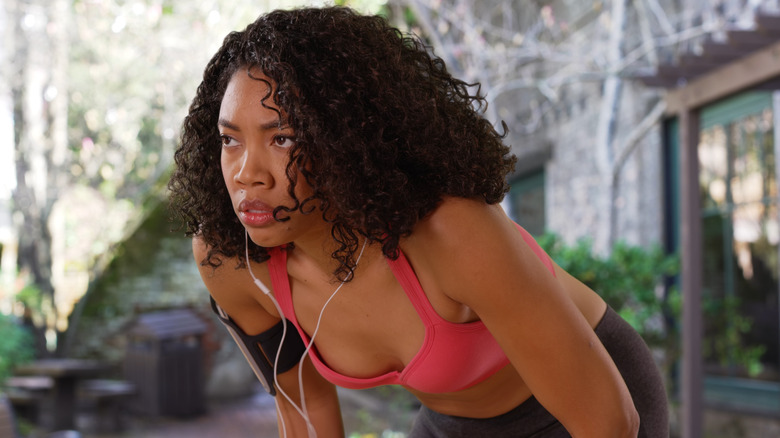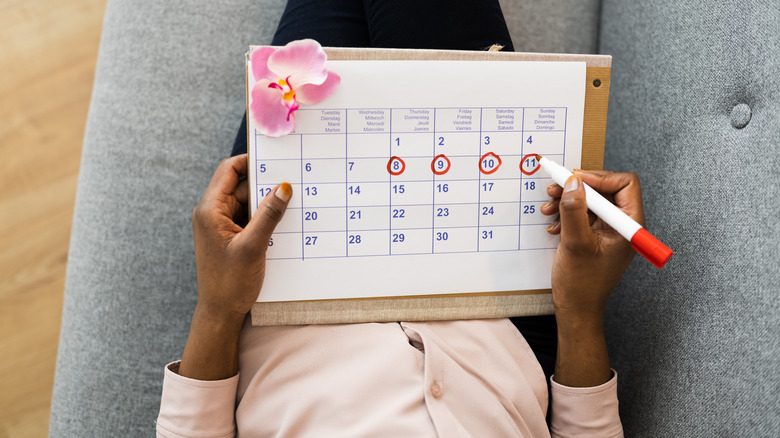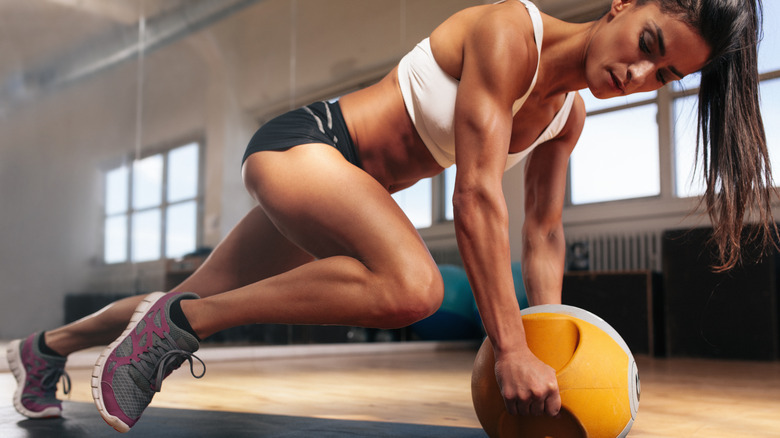The Best Time To Exercise That Will Optimize Your Energy
The days of sitting on our couches, dressing in sweatpants around the clock, and cracking open a bottle of wine at noon on a Tuesday seemingly are coming to an end. Whether it's because we're heading back to the office or gearing up for summer swimwear season, we're working out again, baby! We see your hustle and we want to help you maximize your efforts.
Those of us who have a period know that during every month, energy levels fluctuate. Sometimes we feel energized and ready to take on the world! Other times, we might feel more like a wilted plant with no life force at all. The way the menstrual cycle affects your energy levels is all because of the way hormones shift from one phase of your cycle to the next (per OviaHealth).
Fortunately, you can move with ease and even optimize your workouts through every phase during the month. But first, it helps to identify the stages of the menstrual cycle and understand what they mean.
What are the phases of the menstrual cycle?
There's more to a normal menstrual cycle than being on your period. Menstrual bleeding happens during the menstrual or menses phase of the cycle when the lining of the uterus sheds if no egg has been fertilized (per Cleveland Clinic). But menstruation is only the first phase of the monthly cycle.
Day one of a person's period is the start of the follicular phase (simultaneous with the menstrual phase). The high point of this phase is the development of follicles (each of which holds an immature egg) in the ovaries (via Merck Manuals). This phase typically lasts about 13 or 14 days, and as it progresses, the level of estrogen in the body rises in preparation for possible pregnancy. It ends with the release of a mature egg from an ovary (ovulation).
The ovulatory phase begins when the level of luteinizing hormone surges, causing a mature egg to be released from an ovary and travel down a fallopian tube and into the uterus. Ovulation usually lasts only 16 to 32 hours, and the egg can be fertilized only up to 12 hours after it's released (via Merck Manuals).
The final phase, the luteal phase, is when the follicle morphs into a mass of cells that releases progesterone in order to keep the uterine wall thick for implantation (per Medical News Today). If the egg is not fertilized, the follicle will dissolve, signaling the start of the menstruation, which usually lasts from 3 to 6 days.
The best time of month to tackle a tough workout
It's perfectly fine to exercise during any phase of your menstrual cycle. But with hormones peaking and plummeting throughout the month, you'll likely feel more sluggish during one phase and at your absolute best during another.
During the luteal phase, progesterone levels will surge and then rapidly drop if you don't become pregnant, which according to OviaHealth, may mess up your sleep patterns and leave you feeling lethargic if not totally wiped out.
A study published in Endotext found that estrogen and testosterone levels are at their highest during the ovulation phase. More of those hormones means a big burst in energy for us, according to Women's Day. So if you keep track of your menstrual cycle, you might want to schedule an easy yoga practice for days during your luteal phase and plan to press the pedal to the metal for when you know you'll be ovulating. Because of ovulation's associated hormone-fueled energy burst, your body will be more receptive to high-intensity training and cardio workouts during the ovulatory phase.
If you're looking for a workout that's fitting for each phase of your menstrual cycle, Maeve McEwen, a certified personal trainer, has created a series of exercise videos on Mindbodygreen that can guide you get through the month with ease.



